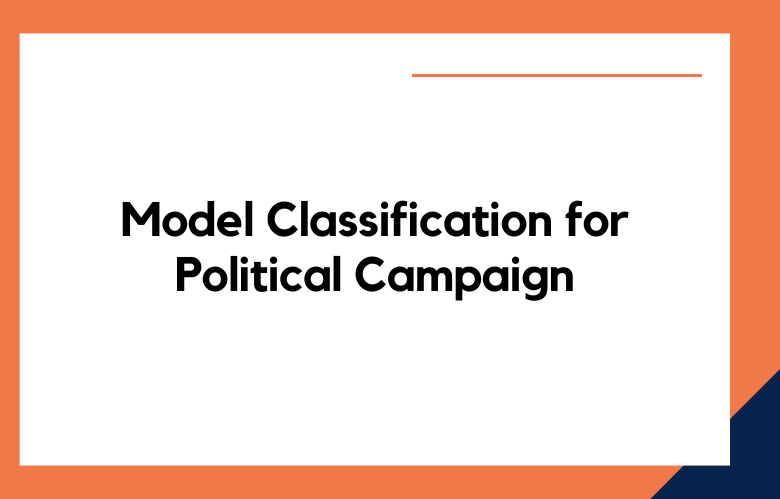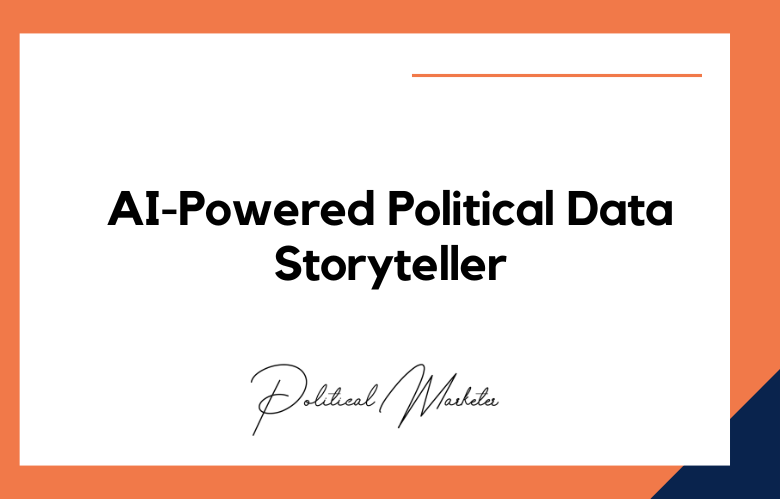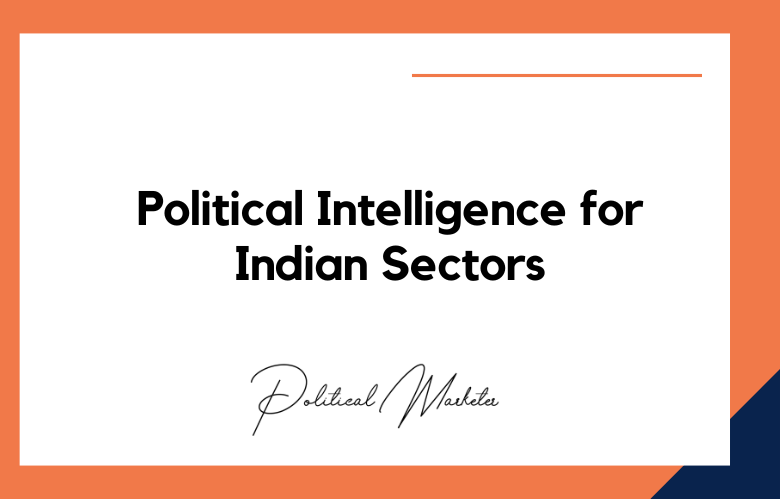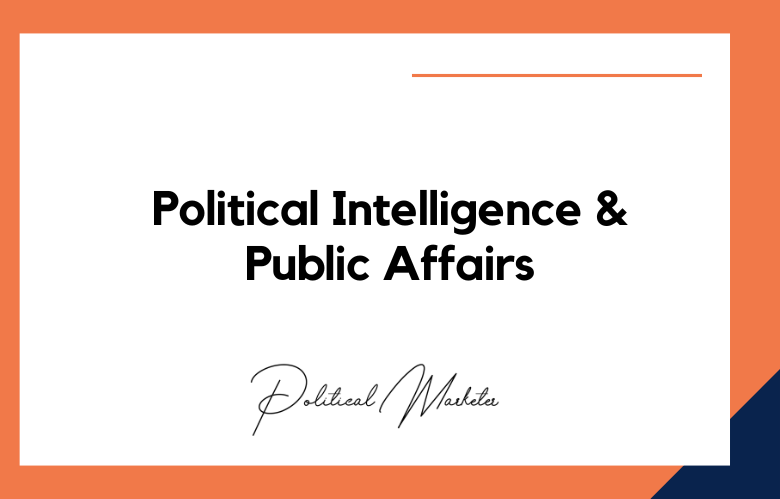Model classification in political campaigns utilizes advanced machine learning techniques to categorize various data elements, helping strategize more targeted and effective electoral efforts.
This approach allows campaigns to sift through extensive datasets—ranging from voter demographics and historical voting patterns to social media interactions and sentiment analyses—to classify voters into distinct segments or predict behaviors such as turnout likelihood or issue preferences.
Model Classification for Political Campaign: Understanding Data Science Strategies
By applying classification models, political strategists can tailor their messaging, focus outreach efforts, and allocate resources more efficiently, ensuring that they accurately address the concerns and motivations of different voter groups.
For instance, a classification model might identify undecided voters receptive to specific policy positions, enabling targeted communication that could sway their vote.
However, deploying classification models in political campaigns also demands careful consideration of ethical implications, data privacy, and the potential for bias in model predictions. Ensuring transparency in how these models are developed, the data they use, and the decisions they inform is crucial for maintaining voter trust and upholding democratic values.
In summary, model classification offers powerful tools for political campaigns navigating the complex and dynamic electoral landscape. Yet, it underscores the need for responsible use of technology, balancing the drive for campaign success with a commitment to fairness and integrity in the political process.
- Understanding Political Campaigns
- Importance of Supervised Learning
- Deep Learning in Political Ads
- Tone Classification for Video Content
- Data Collection and Processing
- Implementing Data Science Models
- Visualizing Political Data Models
- Strategies for Data-Driven Success
- Efficient Model Deployment and Optimization
- Summary
- Frequently Asked Questions
- What is the significance of using supervised learning in political campaigns?
- How can deep learning be leveraged in political ads?
- Why is tone classification essential for video content in political campaigns?
- What are the key benefits of visualizing political data models?
- How can efficient model deployment and optimization contribute to a successful data-driven campaign strategy?
Did you know that accurate classification models can be game-changers in political campaigns? Understanding the dynamics of model classification is crucial for effective voter targeting and campaign success.
By harnessing the power of data-driven insights, campaigns can tailor their strategies to resonate with specific voter segments. Stay tuned to discover how these models can revolutionize political campaign strategy and execution.
Key Takeaways
- Utilize Supervised Learning: Implement supervised learning techniques to accurately classify and predict political campaigns based on labeled data.
- Incorporate Deep Learning: Leverage deep learning algorithms for analyzing and optimizing political ads to target specific audiences effectively.
- Enhance Tone Classification: Apply tone classification models to video content to gauge sentiment and tailor campaign messages accordingly.
- Optimize Data Processing: Streamline data collection and processing methods to ensure clean, relevant data for building robust models.
- Embrace Data Visualization: Use visualizations to effectively interpret and communicate political data models, aiding decision-making processes.
- Prioritize Model Deployment: Develop strategies for efficient model deployment and ongoing optimization to drive data-driven success in political campaigns.
Understanding Political Campaigns
Impact on Society
Political campaigns are crucial in shaping societal beliefs, values, and policies. They have the power to influence public opinion and drive social change.
They serve as a platform for political candidates to communicate their ideas and agendas to the masses. Candidates can garner support from voters through various campaign strategies, such as speeches, debates, and advertisements.
Key Elements of Success
The success of a political campaign hinges on several key elements. Effective communication, strategic messaging, and targeted outreach are vital components that can sway public perception.
Moreover, building a solid campaign team, harnessing data analytics, and adapting to changing political landscapes are critical for achieving victory in an election.
Historical Evolution
The evolution of political campaigns dates back centuries. In the early days, campaigns were primarily conducted through printed materials and grassroots efforts. Over time, technological advancements revolutionized campaign tactics.
For instance, the advent of television allowed candidates to reach a wider audience through televised debates and commercials. The rise of the internet further transformed campaigns by enabling online fundraising, social media engagement, and targeted advertising.
Importance of Supervised Learning
Role:
Supervised learning plays a crucial role in model classification for political campaigns. It involves training algorithms on labeled data, allowing them to predict outcomes based on historical information.
Benefits:
The benefits of utilizing supervised learning techniques in political campaign analysis are immense. First, it enables precise segmentation of voters based on demographics, behaviors, and preferences. This targeted approach enhances the effectiveness of campaign strategies. Second, supervised learning helps in sentiment analysis by categorizing public opinions toward specific policies or candidates. By analyzing sentiments, campaign teams can tailor their messaging to resonate better with the electorate.
Real-World Examples:
Real-world examples of supervised learning in political campaigns include sentiment analysis of social media data to gauge public perceptions of candidates or policies. Predictive modeling forecasts election results by analyzing various factors such as voter turnout, historical voting patterns, and candidate popularity. These models provide valuable insights for campaign managers to make informed decisions and allocate resources effectively.
Deep Learning in Political Ads
Advantages
Deep learning plays a crucial role in analyzing political advertisements because it detects intricate patterns within vast datasets. By utilizing deep neural networks, models can accurately classify ad content based on images, text, and audio. There are numerous advantages of deep learning models in understanding political ad content. These models can identify subtle nuances and sentiments that may be challenging for humans to recognize. They can process large volumes of data quickly and efficiently.
Challenges
Despite its benefits, implementing deep learning in political ad classification comes with challenges. One common issue is the need for substantial amounts of labeled data to effectively train these models. Obtaining such data can be costly and time-consuming.
Another challenge is the potential for bias in the training data, which can lead to misinterpretations by the mode. Ensuring the dataset is diverse, and representative of various perspectives is crucial to prevent biased classifications.
Tone Classification for Video Content
Importance of Tone Classification
Tone classification plays a pivotal role in analyzing political video content. By categorizing the emotional tones conveyed in videos, viewers can better understand the underlying messages. This process helps decode the subtle nuances and intentions behind each political ad.
Approaches to Tone Classification
- Manual Annotation: In this method, human annotators manually label the emotional tone of each video ad. While accurate, this approach is time-consuming and subjective, as individual perceptions can vary.
- Machine Learning Algorithms: These algorithms analyze audio-visual features to classify the tone of political ads automatically. They offer efficiency and consistency but may lack the contextual understanding that humans provide.
Enhancing Political Messaging Interpretation
- Political campaigns can gauge public sentiment more effectively by employing tone classification techniques. Understanding whether a video conveys a positive, negative, or neutral tone helps tailor messaging strategies.
- For instance, a positive tone in a campaign ad may evoke hope and optimism among viewers. Conversely, a negative tone could instigate fear or skepticism. By leveraging these insights, campaigns can adjust their messaging to resonate with their target audience.
Data Collection and Processing
Importance
Data collection methods play a crucial role in model classification for political campaigns. Gathering accurate and relevant data is essential for understanding voter behavior, preferences, and sentiments. This information enables campaign teams to tailor their strategies effectively.
Effective data collection allows campaigns to target specific demographics, craft personalized messages, and allocate resources efficiently. By analyzing data from various sources such as surveys, social media, and public records, campaign managers can make informed decisions to maximize impact.
Strategies
Strategies for processing and cleaning are vital to ensure the accuracy and reliability of political campaign data. Utilizing advanced analytics tools helps organize large datasets, identify patterns, and extract valuable insights. Data cleaning involves removing duplicates, correcting errors, and standardizing formats for consistency.
Implementing machine learning algorithms helps classify data into relevant categories for better analysis. By employing techniques like natural language processing (NLP) and sentiment analysis, campaign teams can effectively interpret text data from speeches, articles, or social media posts.
Ethical Considerations
Ethical considerations are paramount when collecting data for political campaigns. Respecting individuals’ privacy rights and ensuring data security are fundamental principles. Transparency about the type of data collected, how it will be used, and obtaining consent from individuals is crucial to maintaining trust.
Campaigns must adhere to legal regulations such as GDPR or CCPA to protect sensitive information and prevent misuse. Avoiding biases in data collection processes is essential to ensure fair representation of diverse viewpoints within the electorate.
Implementing Data Science Models
Training and Testing
The initial step in implementing data science models for political campaign analysis involves training and testing the models. This process includes feeding historical data into the model to enable it to learn patterns and relationships. Subsequently, the model is tested with new data to evaluate its accuracy and effectiveness in predicting outcomes.
When training a model for political campaigns, splitting the data into training and testing sets is crucial. The training set teaches the model patterns, while the testing set assesses how well the model generalizes to new data. Evaluating the model’s predictive capabilities can validate the model’s performance on unseen data.
Selection Criteria
Selecting an appropriate data science model for political campaigns requires careful consideration of various factors. The choice of model depends on the nature of the data, the complexity of relationships within the data, and the specific goals of the campaign analysis. For instance, decision trees are helpful for interpreting results and understanding the importance of features, while logistic regression is adequate for binary classification tasks.
When deciding on a model for political campaign analysis, it is essential to evaluate factors such as interpretability, scalability, and computational efficiency. Considering the trade-off between bias and variance is crucial in selecting a model that generalizes well to new data while avoiding overfitting or underfitting.
Model Deployment
Once a suitable data science model has been trained and tested for political campaign analysis, the next step is to deploy it in real-world scenarios. This deployment phase includes integrating the model into existing systems or platforms campaign managers use to make informed decisions based on predictive analytics.
The deployment process also entails continuously monitoring the performance of the deployed model. Regular evaluations ensure that the model remains accurate and up-to-date with changing trends or patterns in political landscapes. Refining and updating models based on real-time feedback can adjust campaign strategies dynamically for optimal results.
Visualizing Political Data Models
Importance of Visualization
Data visualization is crucial in political data modeling. It enables stakeholders to grasp complex insights quickly and enhances understanding and decision-making processes.
Effective visualization techniques can simplify intricate political campaign data, making it accessible to a broader audience. By utilizing clear graphs and charts, data becomes more digestible.
Various Visualization Techniques
- Bar charts: Ideal for comparing candidate performance across different demographics.
- Pie charts: Useful for illustrating the distribution of voter preferences among various age groups.
- Heat maps: Effective in showcasing regional variations in voting patterns.
Utilizing these techniques enhances the ability to identify trends, patterns, and correlations within political datasets. They provide a comprehensive overview of campaign performance metrics.
Communication through Visualization
Through data visualization, political analysts can present findings visually engagingly. This aids in conveying key insights and recommendations derived from sophisticated data models.
Visual representations allow for the effective communication of complex statistical information to diverse audiences. Stakeholders can easily interpret and act upon the insights generated from political data analysis.
Strategies for Data-Driven Success
Predictive Analytics
Predictive analytics plays a crucial role in shaping data-driven campaign strategies. Political campaigns can use historical data and advanced algorithms to forecast voter behavior and tailor their messaging accordingly. This targeted approach helps optimize resources and maximize impact.
Case Studies
- Obama’s 2008 Campaign: Leveraged predictive analytics to identify potential supporters and personalize outreach efforts. This resulted in increased engagement and voter turnout.
- Brexit Referendum: The Leave campaign utilized data analysis to target undecided voters effectively, contributing to their victory.
Data-driven success in political campaigns hinges on strategic planning, targeted messaging, and real-time adjustments based on analytics insights. By leveraging predictive models, campaigns can allocate resources efficiently, engage with voters effectively, and ultimately increase their chances of success.
Efficient Model Deployment and Optimization
Importance of Deployment
Efficient model deployment is crucial to ensure accurate predictions and informed decision-making in political campaigns. By deploying models effectively, campaign managers can target specific voter segments with tailored messages.
Maintaining an optimized model ensures that the campaign’s resources are utilized efficiently, leading to cost-effective strategies. This optimization process involves fine-tuning the model parameters based on real-time data feedback to improve prediction accuracy.
Optimization Techniques
Utilizing techniques such as hyperparameter tuning and feature selection can significantly enhance the performance of political campaign models. Hyperparameter tuning involves adjusting the internal settings of the model to achieve better results, while feature selection helps identify the most relevant variables for prediction.
Regular model evaluation is essential for optimization. It allows campaign teams to identify areas for improvement and make necessary adjustments. By continuously monitoring the model’s performance, campaign managers can effectively adapt their strategies to changing circumstances.
Best Practices for Maintenance
To maintain deployed models effectively, it is crucial to establish a robust monitoring system that tracks key performance metrics and alerts campaign teams of any anomalies. Regular updates and retraining of models based on new data ensure they remain relevant and accurate throughout the campaign.
Implementing a version control system enables campaign managers to track changes made to the model over time, ensuring transparency and reproducibility. By documenting modifications and updates systematically, teams can maintain accountability and trace the evolution of their predictive models.
- Pros:
- Enhanced prediction accuracy
- Cost-effective resource utilization
- Cons:
- Requires ongoing monitoring and maintenance
- Complexity in optimizing models
- Ensure efficient deployment for accurate predictions.
- Utilize hyperparameter tuning and feature selection for optimization.
- Regularly evaluate models and adapt strategies accordingly.
- Establish monitoring systems for continuous performance tracking.
- Implement version control for transparency and reproducibility.
Summary
You’ve delved into political campaigns, understanding how supervised and deep learning play vital roles in shaping strategies. Tone classification for video content and efficient data collection are crucial for successful model implementation. Visualizing political data models is critical to grasping insights effectively. To achieve data-driven success, focus on deploying and optimizing your models efficiently.
Embrace the power of data science in political campaigns. Implement these strategies to enhance your approach and make informed decisions that can significantly impact outcomes.
Frequently Asked Questions
What is the significance of using supervised learning in political campaigns?
Supervised learning plays a crucial role in political campaigns by enabling the classification of voter behavior, sentiment analysis, and targeted messaging based on historical data. It helps predict outcomes and optimize campaign strategies for better efficiency.
How can deep learning be leveraged in political ads?
Deep learning enhances the effectiveness of political ads by analyzing large datasets to identify patterns, trends, and insights that traditional methods may overlook. It enables personalized ad targeting, sentiment analysis, and optimizing ad content for maximum impact.
Why is tone classification essential for video content in political campaigns?
Tone classification helpsunderstandg the emotional undertones of video content used in political campaigns. By analyzing tones such as positive, negative, neutral, or emotional cues, campaigners can tailor their messages effectively to resonate with their target audience and evoke desired responses.
What are the key benefits of visualizing political data models?
Visualizing political data models provides clear insights into complex information, making it easier to interpret trends, patterns, and correlations within the data. It aids in decision-making processes by presenting information in a visually appealing format that is easy to understand and communicate with stakeholders.
How can efficient model deployment and optimization contribute to a successful data-driven campaign strategy?
Efficient model deployment ensures quick implementation of data science models into real-world scenarios. Optimization fine-tunes these models for better accuracy and performance, leading to informed decision-making processes that drive successful data-driven campaign strategies with measurable outcomes.











